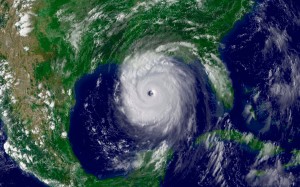Have you noticed that the cost of filling your vehicle’s tank goes up significantly once the weather gets warmer? Gasoline actually costs more in the summer than it does in the winter season, for a number of different reasons. As the weather warms up and school lets out, more people start traveling. This means that the demand for gasoline increases by a large amount very suddenly. Basic economics teaches us that as demand rises, so will the price for meeting it. Gasoline costs go up to meet the increased demand from people taking summer vacations, day trips, and even just going out in the nicer weather more. However, the reason for the high price of summer gas goes a little deeper. We were curious, we discovered some of the unknown secrets that were revealed to us, when we did a little more research.
Not just natural Supply and Demand
There’s more to it than just the basic economics of supply and demand. A key reason for the rising cost of summer gas is that supply is often limited at the beginning of the summer season. Summer is when most energy companies take care of any needed maintenance on their refineries, factories and buildings. This “un-natural” change in the supply can result in less gasoline for the nation as factories and refineries are shut down for a brief period of time. Coupled with the increased demand from people going out and traveling more, you have a perfect storm for a hike in prices. When you have increased demand and limited supply you will always see a rise in prices as the market adjusts. The good news is most refineries are up and running again once summer hits fully, but those early months can be a little lean for the gasoline market.
Head the warnings
As the seasons shift, natural disasters can also play a role in disrupting the supply available by affecting the drilling, production, and refining facilities necessary to ensure a good supply of gasoline. Have you even noticed that the price of oil/gasoline will spike just about every time a storm is headed to a major drilling or refining area in the US? The Gulf of Mexico region has a tremendous amount of oil and gas drilling and refining. When a major storm is headed their way, it causes concerns in the market that the oil production and refining capabilities of those areas will be shut down or destroyed. Sometimes these concerns are actually realized when the storm has a direct hit as it did with Katrina. Either way, this often causes the price to move higher and you feel it at the pump for a time, until the operations are normalized.
Summer blend
Finally, gasoline in the summer is always more expensive due to the Reformulated Gasoline Program started in 1995, which requires gasoline companies to sell a summer-grade fuel that burns cleaner than the winter-grade fuels they sell during the cold months. Summer-grade fuels use a different blend of additives to produce less air pollution, and require gasoline companies to shut down the refineries before processing it. The government enacted this piece of legislation in order to help with the pollution problems that are worse in the summer and can be dangerous for the public. This markup is passed on to the consumers in the summer prices you see for gasoline.
How high will it go?
Every year investors in the oil market know that demand will increase for gasoline. They know that there will be more people needing it, so they bid higher as it becomes more valuable. Unfortunately, investors don’t have much hard evidence as to exactly how much demand there will be or how much supply will change, so they have to speculate. Their speculation can be based on anything from the weather reports to past years’ performance to rumors of problems with different gasoline companies’ refineries. As speculators raise the bids for oil contracts, other investors see the oil becoming more and more valuable, and consequently cast higher bids as well. The result can produce large swings in the price of oil, which in turn, increases the price of gasoline.
All these factors lead to the rising cost of summer gas at the pump. You feel it every time you go to fill your tank. But, you can fight the high cost of gas with some simple tips to help your current vehicle provide you with better fuel efficiency. Squeeze a few more miles out of every gallon of gas. Click here to discover the Six Energy Saving Tips to Help you Save More Gas.



Leave a Reply